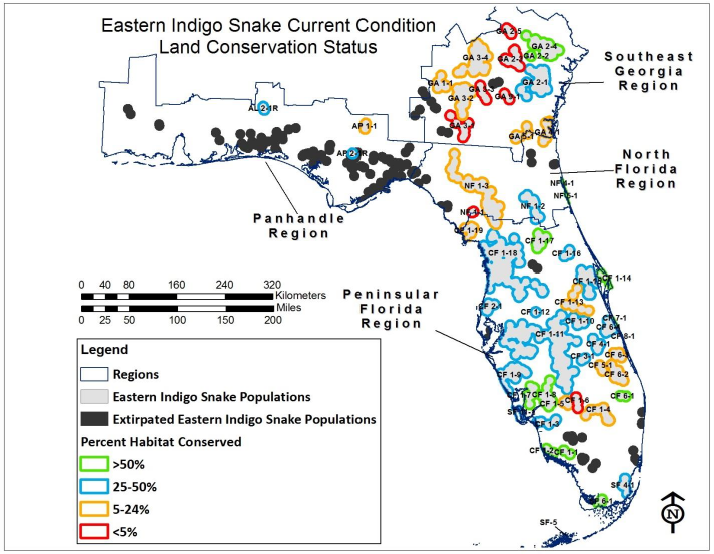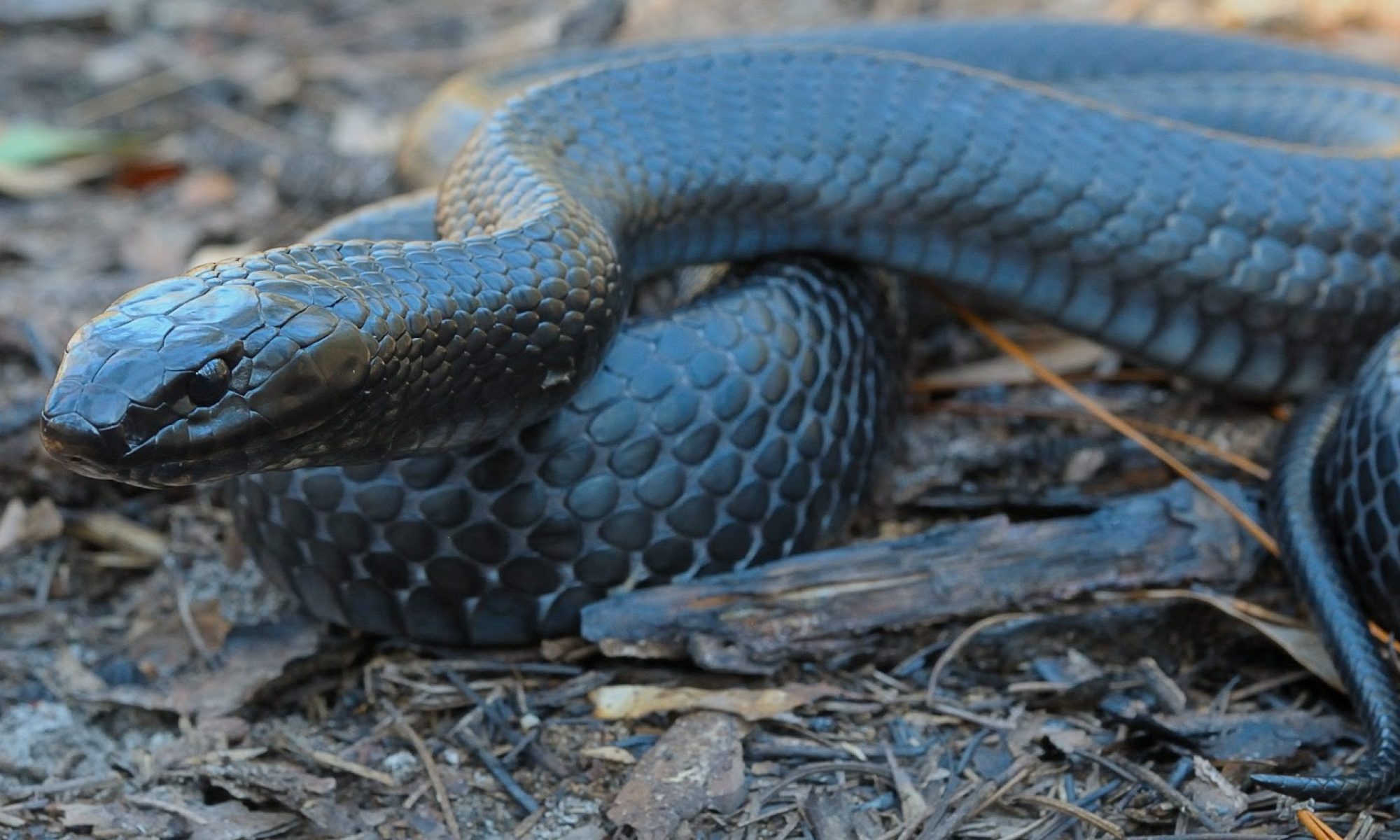Conservation efforts, including land protection and management (see section 4.8 for a summary of on-going conservation efforts) have the potential to maintain or improve current conditions for eastern indigo snake populations. Long-term conservation success for the eastern indigo snake is highest on conserved lands, where various restrictions are assumed to be in place to prevent or limit development. Protection from development alone may not be enough to adequately conserve eastern indigo snake populations because the primary habitat most desired (and required in the northern range) by eastern indigo snakes requires habitat management, specifically fire management. However, those lands in conservation are the mostly likely lands to receive appropriate habitat management.
In Florida, almost 30% of the total land area is considered conservation land (11.7% federally-managed, 13.9% state-managed and 1.4% locally-managed) (FNAI 2018, entire). All of the state of Florida is included in the eastern indigo snake range. In Georgia 12% of total land area within the eastern indigo snake range (section 2.4.4) is considered conservation land (7.8% federally-managed, 2.2% state-managed, 1.9% private conservation-managed and 0.06% locally-managed) (USGS 2016). However, not all conserved lands are relevant to eastern indigo snake conservation. We used the U.S. Geological Survey Protected Areas Database of the United States (PAD-US) (USGS 2016) to assess the status of conserved eastern indigo snake habitat across the species’ range. The state of Georgia has increased protected lands in recent years as part of the Gopher Tortoise Initiative and other efforts. These more recently acquired lands were not represented in the PAD-US dataset and were acquired from the Georgia GIS Clearinghouse (Georgia GIS 2018). Figure 24 shows the land conservation status for each eastern indigo snake population. Of the estimated 6.4 million ac of habitat within the extent of eastern indigo snake populations across the range, approximately 2.2 million ac (0.86 million ha) or 34% of the habitat is on some type of conserved land (federal, state and private). Broken down by region, 42% of the habitat in Peninsular Florida is protected, 38% in the Panhandle, 20% in Southeast Georgia and 19% in North Florida (Figure 25). See Appendix B for additional detail regarding methods for calculating eastern indigo snake conserved habitat.


